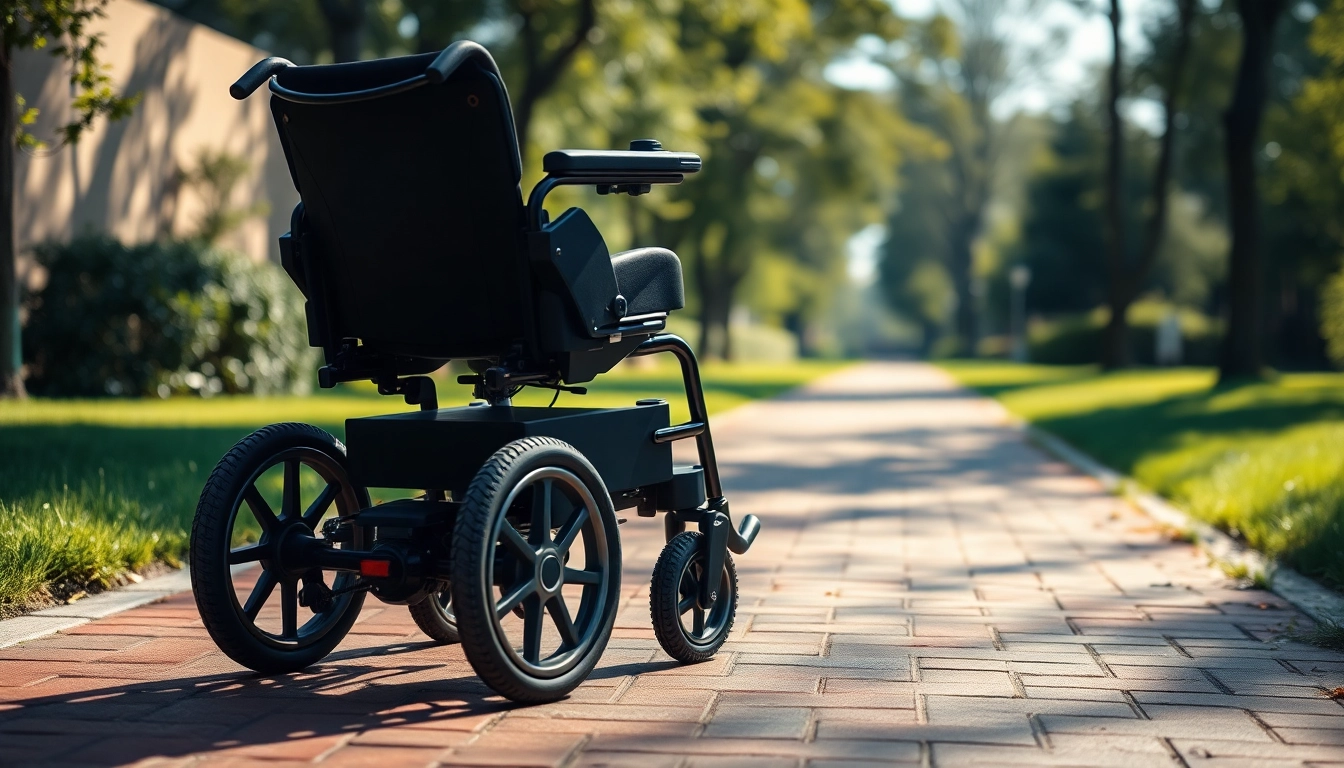Understanding Electric Wheelchairs
What is an Electric Wheelchair?
An electric wheelchair, also known as a powered wheelchair, is a mobility aid that is powered by electric motors. Designed for individuals with limited mobility, these wheelchairs allow users to navigate independently without the physical exertion required by manual wheelchairs. Electric wheelchairs are equipped with batteries and are operated using a joystick or other control mechanisms, making them suitable for various environments, from small indoor spaces to expansive outdoor locations. The modern electric wheelchair offers more than just mobility; it includes features that enhance comfort, safety, and adaptability to the user’s needs.
Benefits of Using an Electric Wheelchair
Many users of electric wheelchairs experience a remarkable improvement in their quality of life. Some of the key benefits include:
- Increased Independence: Electric wheelchairs empower users to move freely without depending on caregivers for mobility.
- Enhanced Accessibility: These wheelchairs can conquer various terrains, allowing users to access outdoor areas and navigate complex indoor layouts.
- Comfort Features: Many electric wheelchairs come with adjustable seating, armrests, and reclining capabilities, making long-term use more comfortable.
- Customizable Options: Various models allow users to tailor their wheelchairs to meet specific needs, from seating arrangements to controls.
- Safety Features: Incorporating features such as anti-tip wheels and automatic brakes enhances user safety and confidence.
Types of Electric Wheelchairs
Electric wheelchairs come in various types, each designed for specific user needs and environments. Understanding these types can help you make an informed choice:
- Portable Electric Wheelchairs: Lightweight and compact, these are ideal for travel and outdoor use.
- Heavy-Duty Electric Wheelchairs: Designed to support more weight and withstand rugged usage, suitable for users with larger body types or for rough terrain.
- Indoor Electric Wheelchairs: Smaller and more maneuverable, these allow easy navigation within tight spaces such as hallways and doorways.
- All-Terrain Electric Wheelchairs: Built for various landscapes, these offer robust tires and powerful motors for outdoor adventures.
- Standing Electric Wheelchairs: Offering the ability to stand, these models promote better posture, circulation, and social interaction.
Key Features of Electric Wheelchairs
Battery Life and Performance
The battery is the heart of any electric wheelchair. Users should consider battery life when selecting a model:
- Battery Type: Lithium-ion batteries provide a longer lifespan and faster charging, while lead-acid batteries are more affordable but have shorter lifespans.
- Range: Most electric wheelchairs offer a range of 15-25 miles on a single charge, depending on the model and user weight.
- Charging Time: While many batteries can be fully charged overnight, some fast-charging options are available for quicker turnaround.
Mobility and Maneuverability
Mobility is a critical feature of electric wheelchairs. Consider the following elements:
- Turning Radius: A smaller turning radius allows for more straightforward navigation in tight spaces.
- Speed Control: Models may vary in speed settings, providing users control over their pace in different environments.
- Wheel Configuration: Rear-wheel drive, front-wheel drive, and mid-wheel drive configurations impact stability, traction, and comfort.
Weight Capacity and Design Options
Choosing a wheelchair that accommodates the user’s weight and design preferences is crucial:
- Weight Capacity: Check manufacturer specifications; most models support 250-500 pounds, with heavy-duty options available for higher weights.
- Ergonomic Design: Many wheelchairs are engineered for comfort with features like cushioned seats and adjustable controls to reduce user strain.
- Color and Style Options: Modern aesthetic designs allow users to personalize their wheelchairs to reflect their style.
Factors to Consider When Choosing an Electric Wheelchair
Indoor vs. Outdoor Use
Deciding where you primarily plan to use the wheelchair will influence your choice. If your needs are primarily indoor, a smaller, compact model may be best. For outdoor enthusiasts, look for robust models with all-terrain capabilities and good battery life.
Portability and Storage Solutions
Consider how easy it is to transport and store your electric wheelchair. Portable models often fold, making them easier to fit into vehicles. Some electric wheelchairs come with remote controls or can be disassembled into manageable parts for transport and storage.
Budget and Financing Options
Electric wheelchairs can range significantly in price. Set a budget based on your needs and research financing options. Insurance may cover part of the cost, and many providers offer payment plans to help manage expenses.
Best Practices for Maintaining Your Electric Wheelchair
Regular Cleaning and Care Tips
Proper maintenance prolongs the lifespan of your electric wheelchair. Regular cleaning and inspections are necessary:
- Dust and Wipe: Keep the frame clean and free from dust and debris by using a damp cloth.
- Check for Wear: Regularly inspect tires, brakes, and battery connections for potential wear or damage.
- Professional Servicing: Schedule regular check-ups with certified technicians to ensure your wheelchair is functioning correctly.
Battery Maintenance and Management
Taking care of your battery is crucial for maintaining performance:
- Regular Charging: Avoid letting the battery drain completely; charge it regularly to maintain capacity.
- Temperature Awareness: Keep the wheelchair in a temperature-controlled environment to avoid battery damage.
Identifying Common Issues and Repairs
Be alert to signs of malfunction so you can address issues early:
- Slow Performance: This could indicate a battery issue or that the motors need lubrication.
- Unresponsive Controls: Check for connection issues or a low battery, as this can impact performance.
Real-Life Testimonials and Case Studies
Success Stories of Electric Wheelchair Users
Many users have shared how electric wheelchairs have transformed their lives:
One story features Lisa, who regained independence after years of relying on caregivers. After receiving her electric wheelchair, she found that she could attend social activities and even start a new job, highlighting the life-changing potential of this mobility aid.
Comparative Analysis of Different Models
When evaluating options, it’s beneficial to compare multiple brands and models based on user reviews, feature sets, and overall customer satisfaction. For instance, while some models offer robust outdoor capabilities, others might boast superior comfort for indoor navigation.
Community Support and Resources
The electric wheelchair community is rich with support networks. Various online forums and support groups allow users to share experiences, troubleshoot issues, and advocate for accessibility rights, demonstrating the importance of community in navigating the challenges of mobility impairment.


